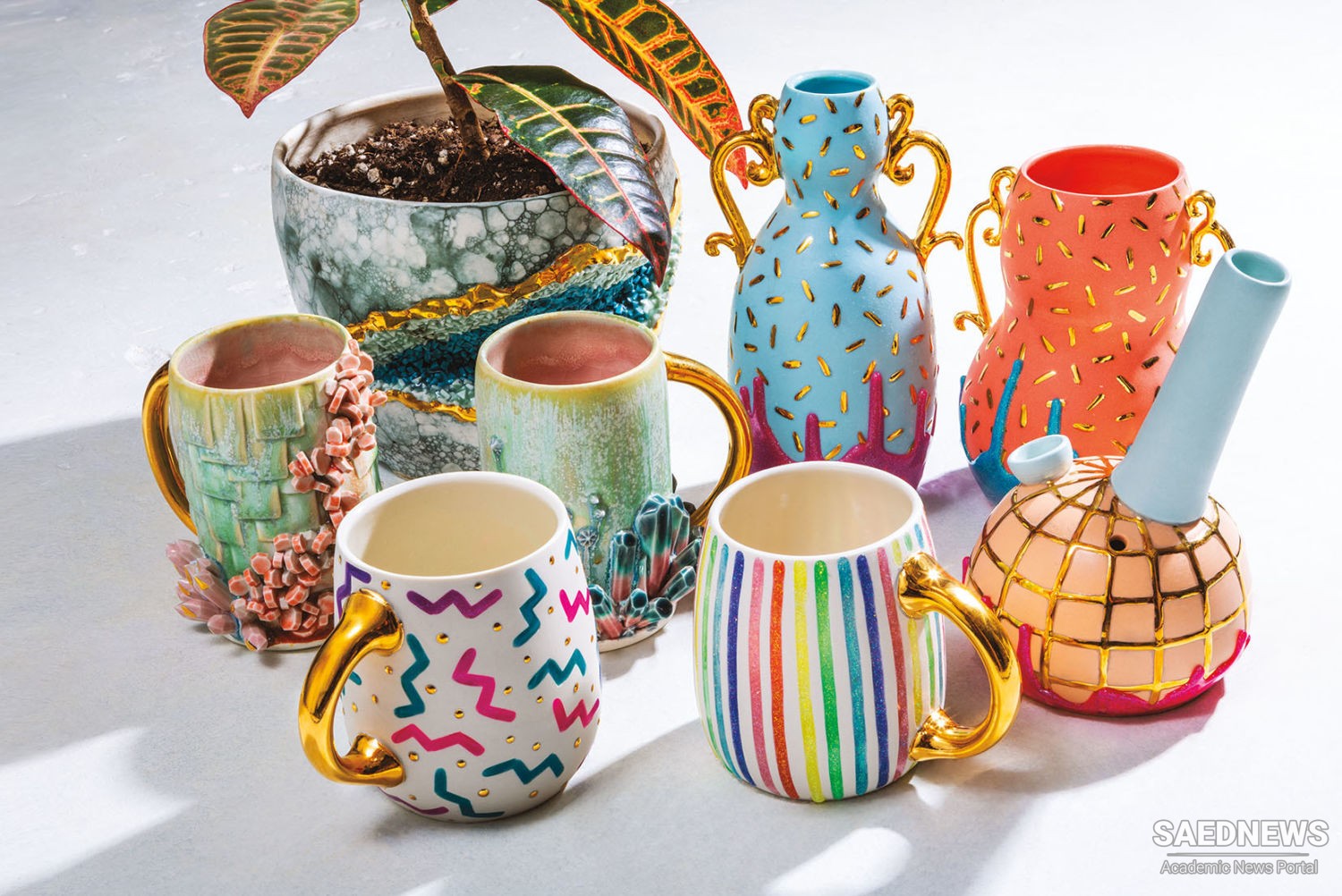The hand-forming of plastic clay and changing it by heating into a hard body impermeable to water is a technique that goes back to the dawn of civilization, that is, to before 6000 BC. Indeed, primitive man, whether in prehistoric times or the present, fashions clay by hollowing out a ball and leaving it to dry in the sun or heating it on an open fire. Such simple means can hardly be classed as even primitive industrial chemistry, but with the rise of the ancient civilizations and the settled urban life that made tolerable the fragile nature of pottery, a number of materials began to be used for a variety of decorative effects. Potters learned, too, to control the temperature of their kilns to produce different colours. In modern parlance they employed reducing and oxidizing conditions to achieve various effects, without of course understanding the reason for this.
Clays are, chemically speaking, hydrated aluminium silicates with other substances such as alkalis, alkaline earths and iron oxide. It is this last that gives the commonest clay its characteristic red colour. The clays commonly found in nature are plastic when mixed with water and can be formed into a variety of shapes. When left to dry until the water content is 8–15 per cent the clay can still be worked, by scraping or turning, but lacks mechanical strength. After further drying and firing at 450–750°C the chemically-combined water is driven off, the clay can no longer combine with water, and it becomes like moderately hard stone. Firing at a higher temperature eventually causes the clay to vitrify and fuse, but that stage was rarely reached in the ancient world. It is impossible to date the technical advances made during the early civilizations of Egypt, Mesopotamia and the Indus, but the art of throwing pots on the potter’s wheel evolved at this time, as also the firing of the ware in kilns, fuelled with wood or charcoal, in place of the open fire. Temperatures of just over 1000°C could occasionally be reached and much greater control of the draught and therefore the heating conditions was achieved. Pottery could be rendered sufficiently non-porous by burnishing, that is, smoothing the unbaked surface by rubbing, but a better surface could be obtained by dipping the ware in a ‘slip’ or a slurry of fine clay and firing, or by glazing, that is, painting on to the surface a substance which on firing would turn into a thin layer of glass. The Egyptian blue glaze was a notable example. It was made from white sand, natron, limestone and a copper compound, perhaps malachite, which imparted a blue colour to the mixture. This was heated for two days at around 900°C, powdered and applied as a glaze to a siliceous body.
The Assyrians, about 700 BC, introduced lead oxide-based glazes, an important development as this was the first glaze that would adhere to a clay base. They were able to obtain a yellow colour by roasting antimony sulphide with lead oxide, and blue and red from copper compounds. The Greeks and Romans made progress in fine workmanship and artistic design rather than in technology. The Greeks, from about 600 BC, did however develop the technique of black and red ware achieved by using reducing and oxidizing conditions to produce two different states of the iron oxide in the red clay. The most interesting development over the next millennium was that of lustre ware. A paste formed from powdered sulphides of copper and silver was applied to a body that had already received a tin-lead glaze, then heated to leave a thin, lustrous layer of copper and silver. The technique arose in the Middle East in the ninth century AD and spread through Islam, reaching Moorish Spain by the fourteenth century. From here it was exported throughout Europe and highly prized by those who could afford more sophisticated tastes, while of course simple peasant ware continued to be made. In Italy it was doubtless the spread of lustre ware that stimulated the tin-glazed ware known as majolica which flourished particularly over the period 1475– 1530. Applying coloured tin–lead glazes to sculpture, Luca della Robbia achieved delightful results. A manuscript by one Picolpasso gives details of the glazing and colouring materials and processes that were applied to the white clay base.
Now, however, an entirely new product was about to make an impact on European taste and fashion, Chinese porcelain. It was known to the Muslims, but examples did not percolate into Europe until the sixteenth century. The trickle became a flood after the eastern trading companies were set up, in the wake of the voyages of exploration, in particular the Dutch East India Company founded in 1609. Chinese pottery is of great antiquity, going back to the third millennium BC. Glazed pottery appears in the third century BC and lead glaze soon afterwards in the Han dynasty, a little earlier than Roman practice in the West. But the great Chinese discovery was that of porcelain, of which the main constituents are kaolin or china clay, which is infusible, and a fusible mixture of feldspar, clay and quartz. This had to be fired at a higher temperature—around 1400°C. Various colours were applied, but above all blue from cobalt minerals. A mineral with just the right amount of impurities, imported probably from Persia in the fourteenth and fifteenth centuries, produced a particularly lovely blue. Thereafter a local mineral had to be used, giving a rather inferior colour. The earliest porcelain is of the eighth or ninth century, it came to maturity during the Sung dynasty (960–1127) and reached its glorious perfection in the Ming dynasty (1368–1644).


 The Chemical Industry: Earlier Evolution
The Chemical Industry: Earlier Evolution














































